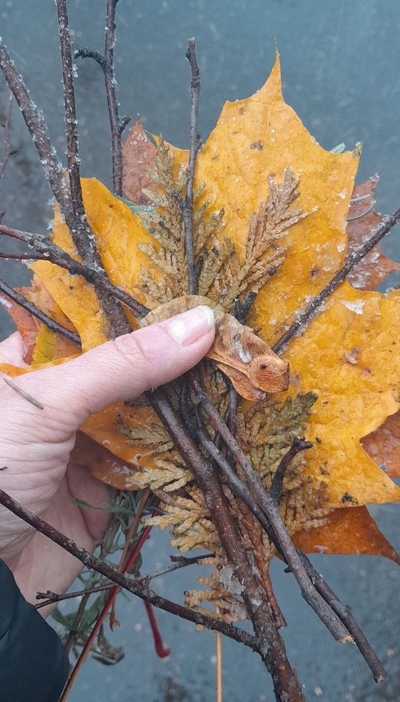
Language
The linguistic aim for November is the introduction and / or revision of ‘have got’ with the negative and affirmative and questions, with different objects around us: school objects, pets, basic body parts etc. We have been practising talking about the things we have got and things we haven’t got, including some pairwork and questions. We have used songs and wordwall, too. The kids are doing well.
Artists
This has been a funny month because it was a whole month without the Artist of the Day. I had to cut a few corners because of the method and the resources. Everything here, all three methods I describe below are very time-consuming, in every possible way:
- they take time to set up before the lesson,
- they require resources that might not always live in your art cupboard
- they require a detailed presentation by the teacher, from A to Z, while the students are watching (and ideally a finished, dry, product)
- since the technique is new for the students, they might also need more time to experiment and to play with the tool and the resources before they move on to create the actual masterpiece
That means less time for other things such as the language that I did not want to give up on. Another thing is that because we have not actually done any proper ‘adult’ printing, there are no ‘real’ artists for us to look at, only the photos from the Internet and the pieces created by the teacher.
It is not a big problem, of course, but I have to admit, I have realised that I miss the presence of Warlhol or Malevich in our lessons. We will be catching up on that, in January (December is devoted to Christmas and there will definitely be more craft in our classes).
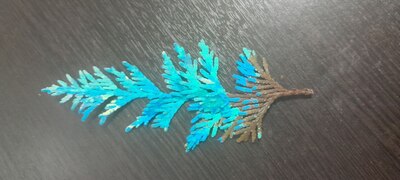
Art
Bubble printing
This activity has already featured here on the blog and I decided to do it again, although it belongs in the category only loosely. However, my selling point here was that, indeed, the final result is a page printed with beautiful colours. So, yes, we did it again!
Marker printing
This is a brand new activity that I found online (Meagan Carlos aka helloartteacher) and it is officially called marker transfer.
The activity is fun, clearly divided into stages and there are a few variations. It can also be easily adapted to a chosen theme. We did ours in end of October / beginning of November and hence a lot of Halloween in the photos.
Step 1: drawing a picture on a piece of paper. It is important, however, to use a permanent marker (or any waterproof marker). The easier version, which might be more appropriate for the first round of the activity can be done with a copy of a colouring picture. We had a pile of Halloween-themed colouring pages and kids were chosing their own.
Step 2: each student has a piece of tinfoil, attached to the table (I like to attach it on four sides to keep the water from leaking out) and they colour it fully with regular markers. It is good to check beforehand, the markers used here cannot be waterproof. Actually, the more rubbish they are the better. I used thick markers, too, because it is easier to cover a large piece of tinfoil with colours.

Step 3: sprinkle the tinfoil with water. I use a regular sprinkling bottle I use for my plants.
Step 4: put your picture (from step 1) face down on the tinfoil and smooth it gently and let the water seep in. Pull away gently and leave out to dry.
The process is really gratyfing and a lot of fun. In our lessons, we managed to do a few pictures, colouring pages and our own creations. We cleaned the tinfoil, waited for it to be dry and reused the same page to create new pictures. We absolutely loved it. Just look at the photos!
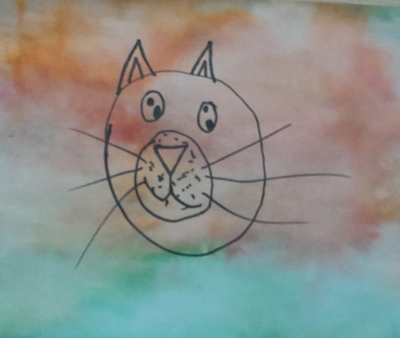
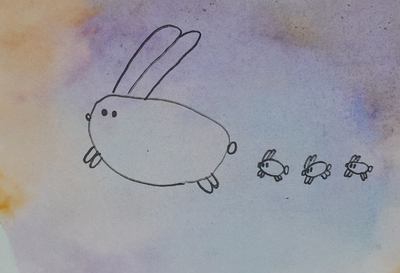
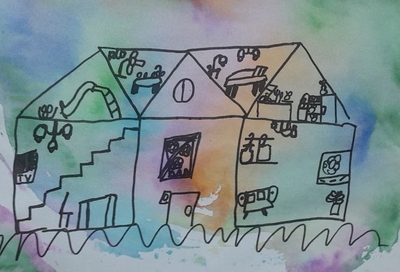
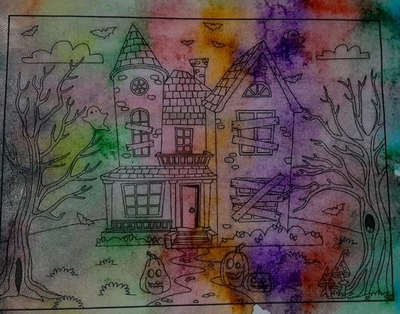
Nature print
This was a variation of the lesson that we did in the summer but I decided to upgrade it this time and use the resources that are literally lying around, in order to minimise food waste and to encourage the kids to look after the environment. You can sometimes see different projects that involve using flowers, seeds and leaves picked up in the summer, just to be ‘destroyed’ for the art’s sake and, to be perfectly honest, I cannot find any justification for it. It seems that autumn is a much better season for that as there are plenty of leaves and flowers that mother nature abandoned already and these can be supplemented with anything that died anyway, the flowers that dried up in the vase, the fruit and veg that are past their use by date etc. I personally feel more comfortable that way and it is not a difficult thing to implement, basically a question of timing.
This time we used: dried leaves and grasses I picked up in our garden, flowers that I got in September that dried up and had been waiting for their turn and some other flowers I got in October that ended their life in our project, a wrinkled apple, a stone and a half of a broccoli that (sadly) didn’t get to be eaten in time.
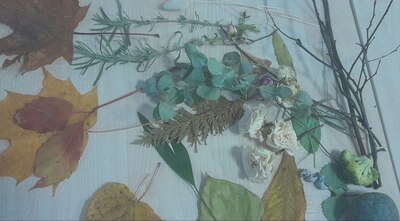
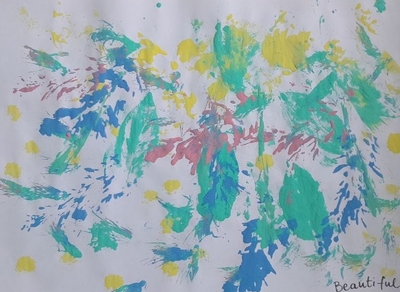
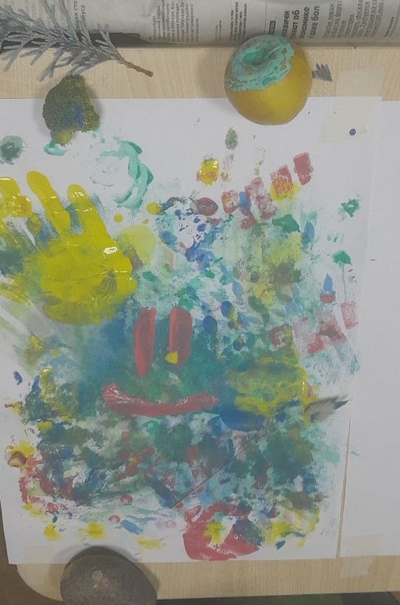
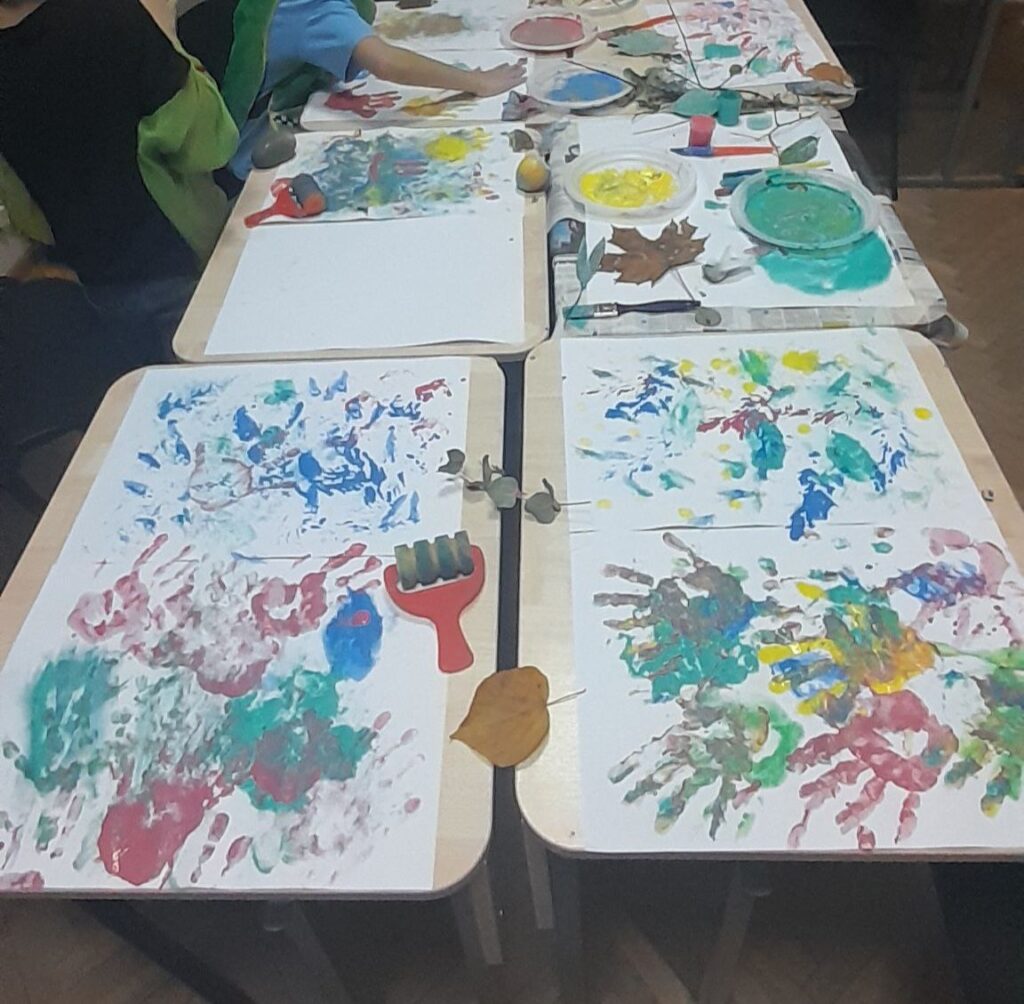
Happy teaching!